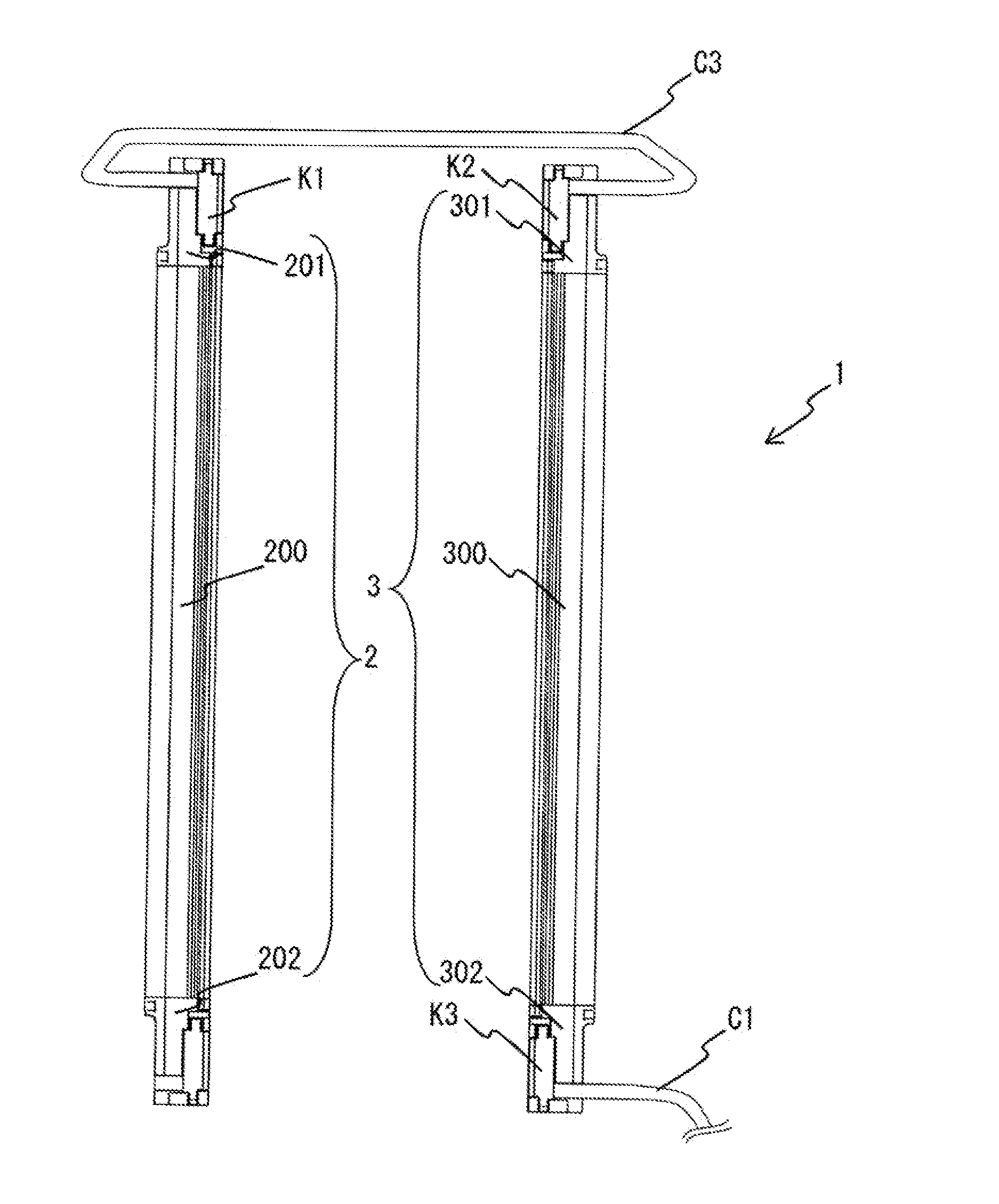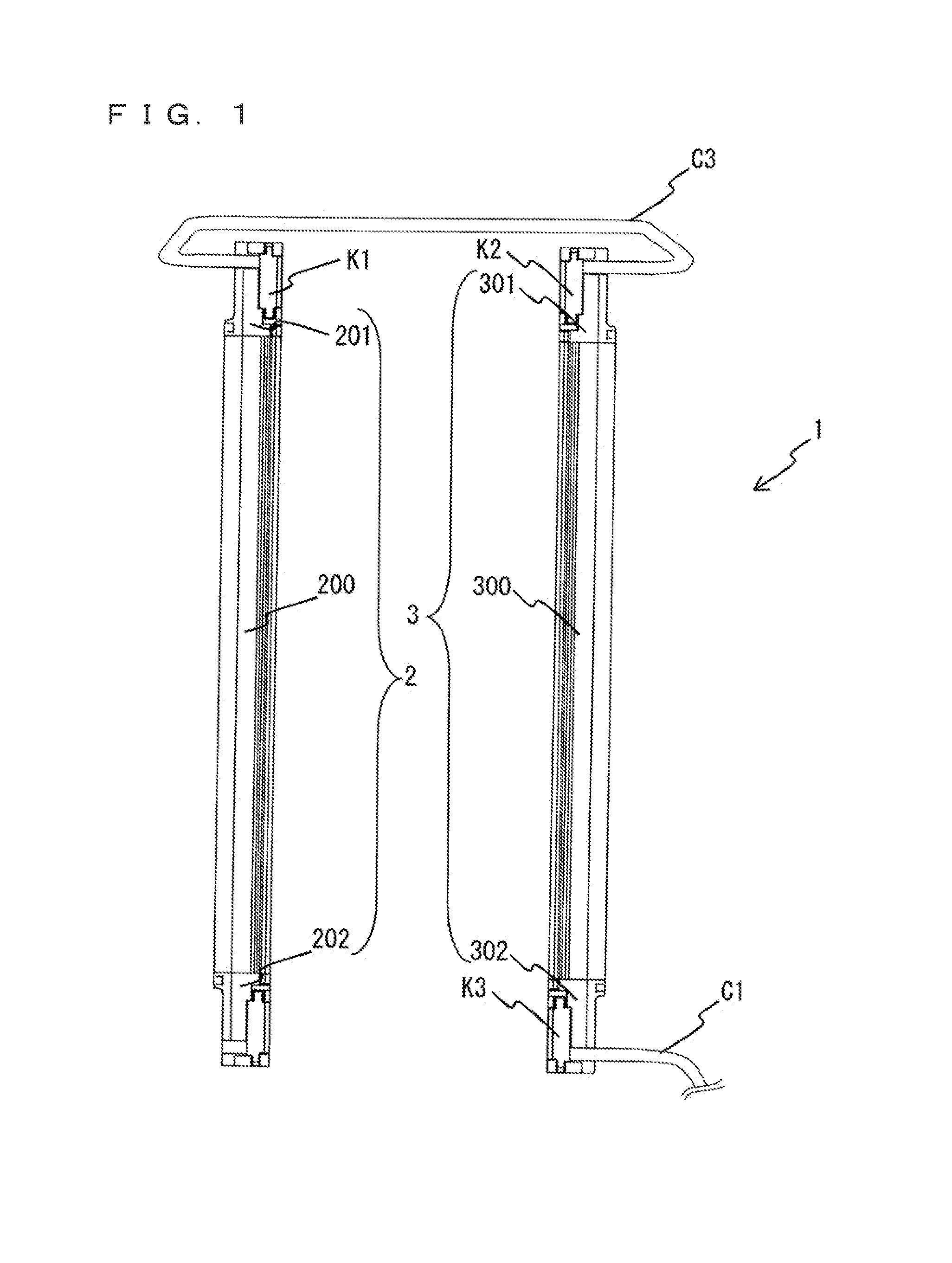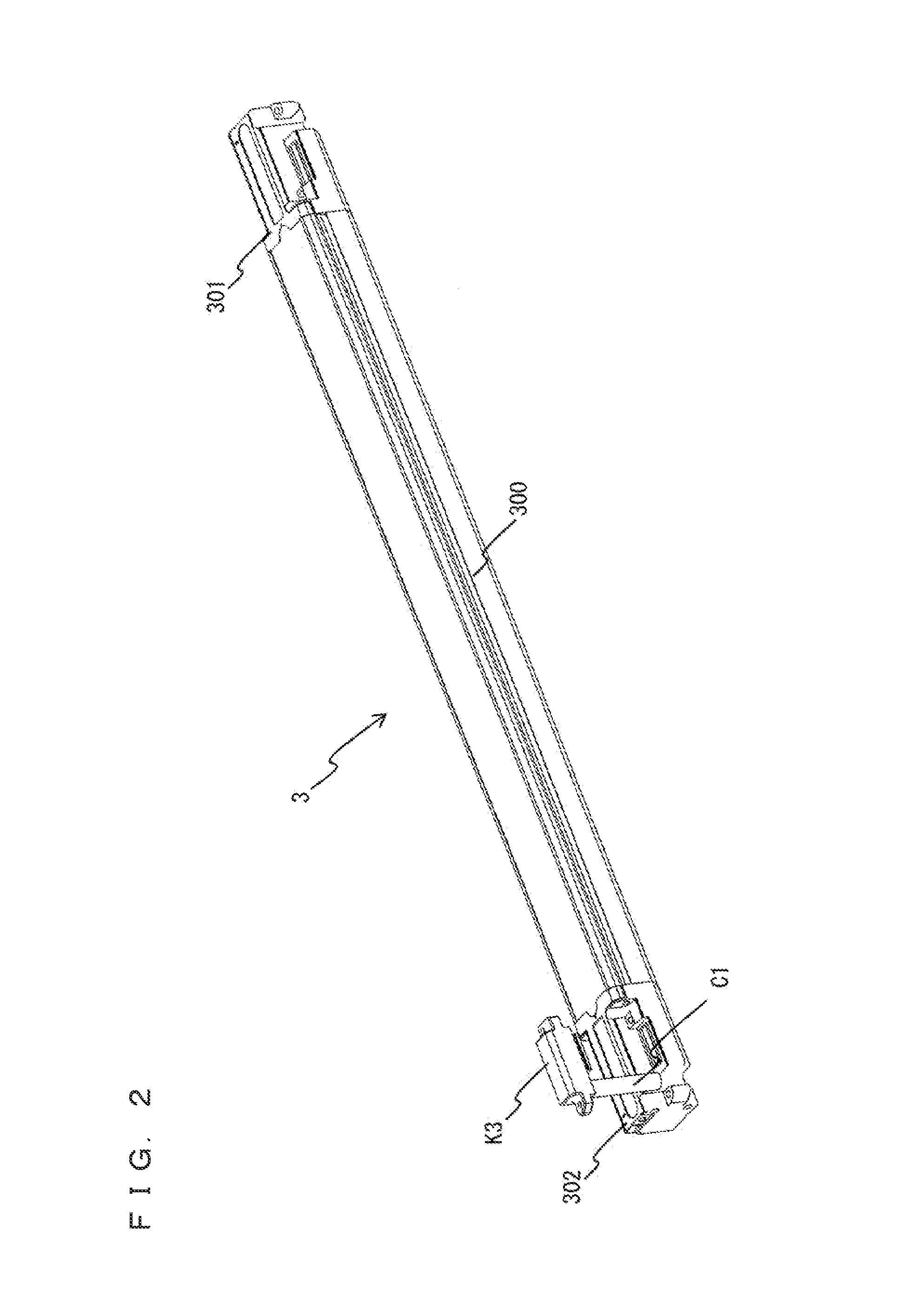Multi-Optical Axis Photoelectric Sensor
a photoelectric sensor and optical axis technology, applied in the direction of optical detection, counting objects on conveyors, instruments, etc., can solve the problems of increased wiring cost, and deterioration of work efficiency, so as to prevent deterioration of workability of wiring work
- Summary
- Abstract
- Description
- Claims
- Application Information
AI Technical Summary
Benefits of technology
Problems solved by technology
Method used
Image
Examples
Embodiment Construction
[0036]Hereinafter, a multi-optical axis photoelectric sensor 1 according to an embodiment of the present invention will be described based upon the drawings.
Outer Appearance Configuration
[0037]FIG. 1 is a view showing an outer appearance configuration example of the multi-optical axis photoelectric sensor 1 according to the embodiment of the present invention. As shown in FIG. 1, a multi-optical axis photoelectric sensor 1 has a phototransmitter 2 and a photoreceiver 3 which are in pairs, and the phototransmitter 2 and the photoreceiver 3 are arranged so as to be opposed to (face) each other on the same plane. For example, optical beams made up of infrared rays are emitted from a plurality of light projecting elements 23, 27 which are provided in the phototransmitter 2 (cf. FIG. 5 described later) toward a plurality of light receiving elements 33, 37 which are provided in the photoreceiver 3 so as to correspond thereto (cf. FIG. 5 described later), thereby to form a safety light cur...
PUM
 Login to View More
Login to View More Abstract
Description
Claims
Application Information
 Login to View More
Login to View More - R&D
- Intellectual Property
- Life Sciences
- Materials
- Tech Scout
- Unparalleled Data Quality
- Higher Quality Content
- 60% Fewer Hallucinations
Browse by: Latest US Patents, China's latest patents, Technical Efficacy Thesaurus, Application Domain, Technology Topic, Popular Technical Reports.
© 2025 PatSnap. All rights reserved.Legal|Privacy policy|Modern Slavery Act Transparency Statement|Sitemap|About US| Contact US: help@patsnap.com



